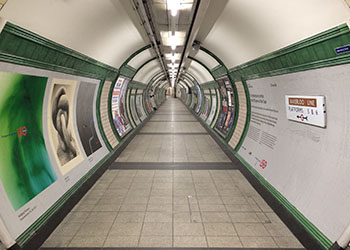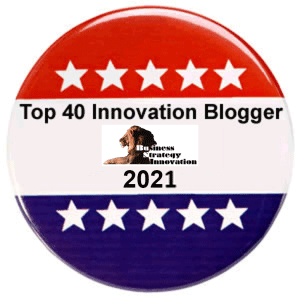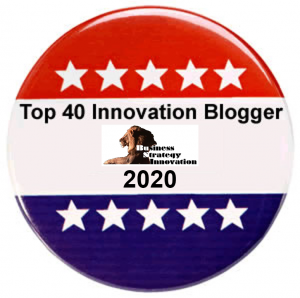I recently attended a fantastic business lunch presentation by John Stewart, who formed and leads Cisco’s Security and Trust Organization. He captivated the audience with this disruptive question; Are you ready for a new world where the convergence of mobility, big data, the cloud, collaboration, and the Internet of Things (IoT) are bringing profound changes for businesses and countries? Are you taking actions to avoid becoming just a digital memory? Surviving and thriving these next few years will take very different thinking. He also stated that 40% of current businesses will be threatened by global disrupters. Where he shared with us the example of Weight Watchers, who have become 95% less valuable, in the last 18 months despite “last year’s Oprah effect.” Suggesting that it is going to require a more strategic, systemic approach to build market value. As well as a deep customer intimacy and a great customer experience, rather than relying on just a celebrity endorsement to bring back lost market share and value.
The business model shifted, and so has what customers expected from their experience!
As some of you are aware that I am at heart, an “old retailer” having learnt the executive management and leadership ropes during my years in marketing development at Grace Bros Department Stores. In the eighties, our focus was towards “the customer is the king” so our strategies included target marketing, market positioning, design management and on the shop floor great customer service. A great customer experience was about customers being able to access the right product at the right price, in the right location and then receiving the best possible service from the salesperson when purchasing it.
However, since then, as stated by John Stewart, the convergence of mobility, big data, the cloud, collaboration, and the Internet of Things (IoT) have brought profound changes for businesses, communities, and countries. Also for customers in terms of their expectations, relationship and the experience they want to have when they engage with an organization.
Improving customer experience
Most companies initially believed technology would deliver an improved customer experience, so they sought technology solutions designed to improve customer loyalty. The focus on this solution aimed at delivering an increased ROI, yet:
It is apparent now that this did not deliver the expected results; causing frustrated users are taking a step back to evaluate why delivering the experience customers valued was so hard to fathom.
At ImagineNation™ in our innovation culture consulting projects, we have observed three key barriers that get in the way of developing customer intimacy and made this so hard. Most companies are still structured around products instead of customers, tending to operate in product and profit-centered based silos. These promote competitive, individual and solo efforts, rather than a team and collaborative effort. Which tend to fragment rather than harness people’s energies and efforts.
There is often a real disconnect between many companies and their customers demonstrated by:
- An overall lack of customer empathy, the role of customer intimacy and what it involves,
- No common understanding as to what customers currently expect and potential value from their products and services,
- No common understating as to how to treat customers in the delivery of products and services which may be different from the way they may expect to be treated.
- The absence of formal customer feedback loops and transparency around the brand promise and the actual way business gets done.
- Focusing on digital experiences as a “tick the box” sales process and not actually engaging and interacting with customers to create a deeper customer intimacy (emotional connection, trust) and experience at the critical point of the sale.
What does a great customer experience mean today?
At ImagineNation™ we suggest companies pursue this type of aligned strategic and systemic approach. Doing this by developing an organizational culture that harnesses the convergence of mobility, big data, the cloud, collaboration, and the Internet of Things (IoT) and merges it with people’s collective genius within the company.
This will enable the organization to see and understand customers expectations, develop customer intimacy and solve their problems by exploring ways of creating, adding and capturing what customers perceive as value.
The three key steps in delivering a great customer experience
1.Clarify brand promise and strategy
- Put the customer at the business enterprises’ epicenter; by knowing what customers expect and value from the enterprises accessible and easy to use products and services and clarify this within a coherent brand promise.
2.Empower and enable people
- Create lines of sight; between peoples role in delivering the brand promise and their customers, by unlocking and harnessing peoples collective genius and developing their ability to empathize with customers. So that they make the right intelligent decisions to serve as advisors and advocates to customers in value-adding ways.
3.Deliver the brand promise
- Deliver the brand promise; by creating products and services that customers want, expect and value. Incorporating lean and agile production methods, rigorous research and development processes, quality management and pre and after-sales, service processes to anticipate and resolve customer issues and complaints quickly.
The Customer is still the King
As we all know, the customer is still the king, it’s just how we acknowledge that their royal role has shifted. We have to be innovative and achieve this by thinking differently, and by taking a strategic and systemic perspective, and by putting customer intimacy and cultural alignment as the top company priority.
By putting People before Process, Value before Profit and Solution before Product companies can not only survive and thrive. They can also flourish in this new world that John Stewart talks about and is co-creating as a part of Cisco.
At ImagineNation™ we provide innovation coaching, education and culture consulting to help businesses achieve their innovation goals. Because we have done most of the learning and actioning of new hybrid mindsets, behaviours and skill-sets already, we can help your businesses also do this by opening people up to their innovation potential.
Contact us now at janet@imaginenation.com.au to find out how we can partner with you to learn, adapt and grow your business in the digital age.











